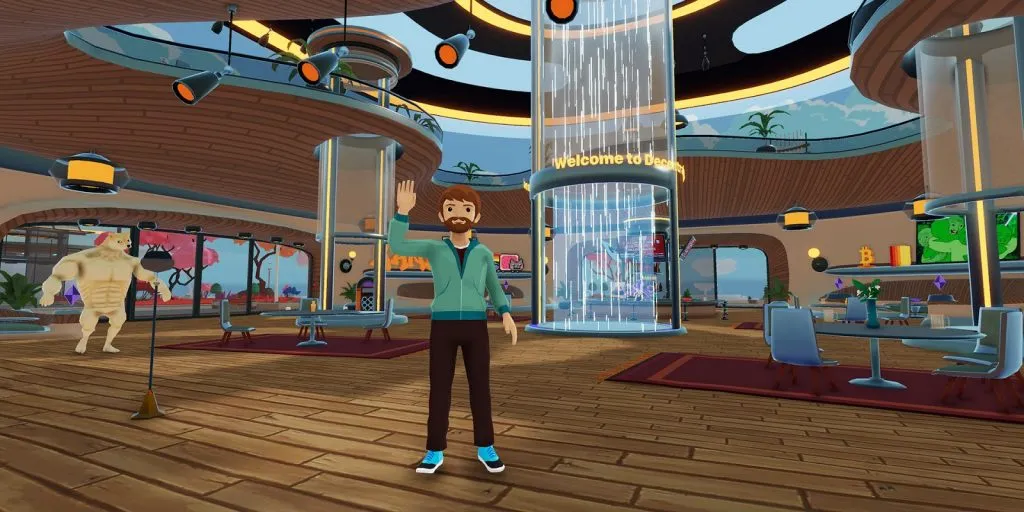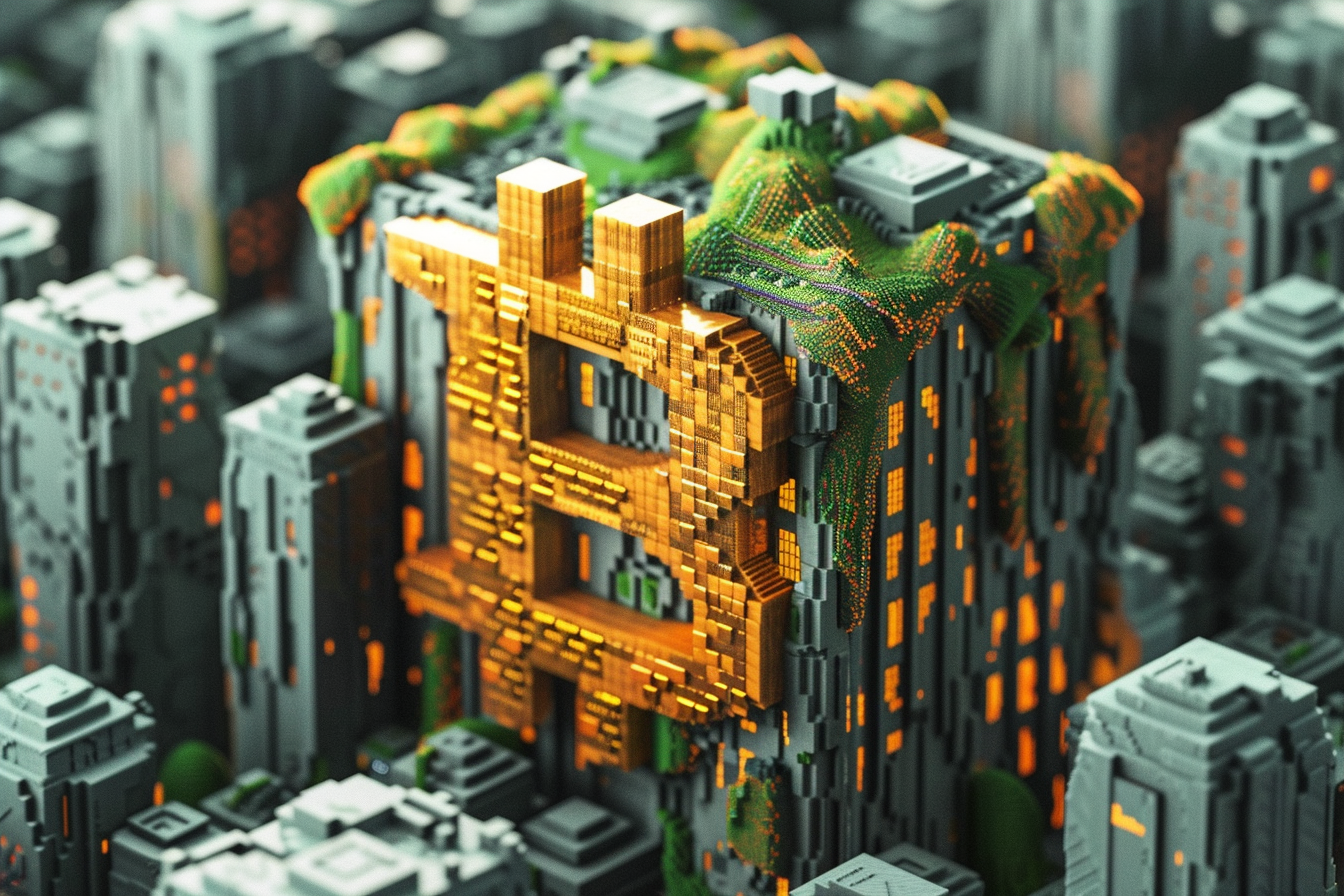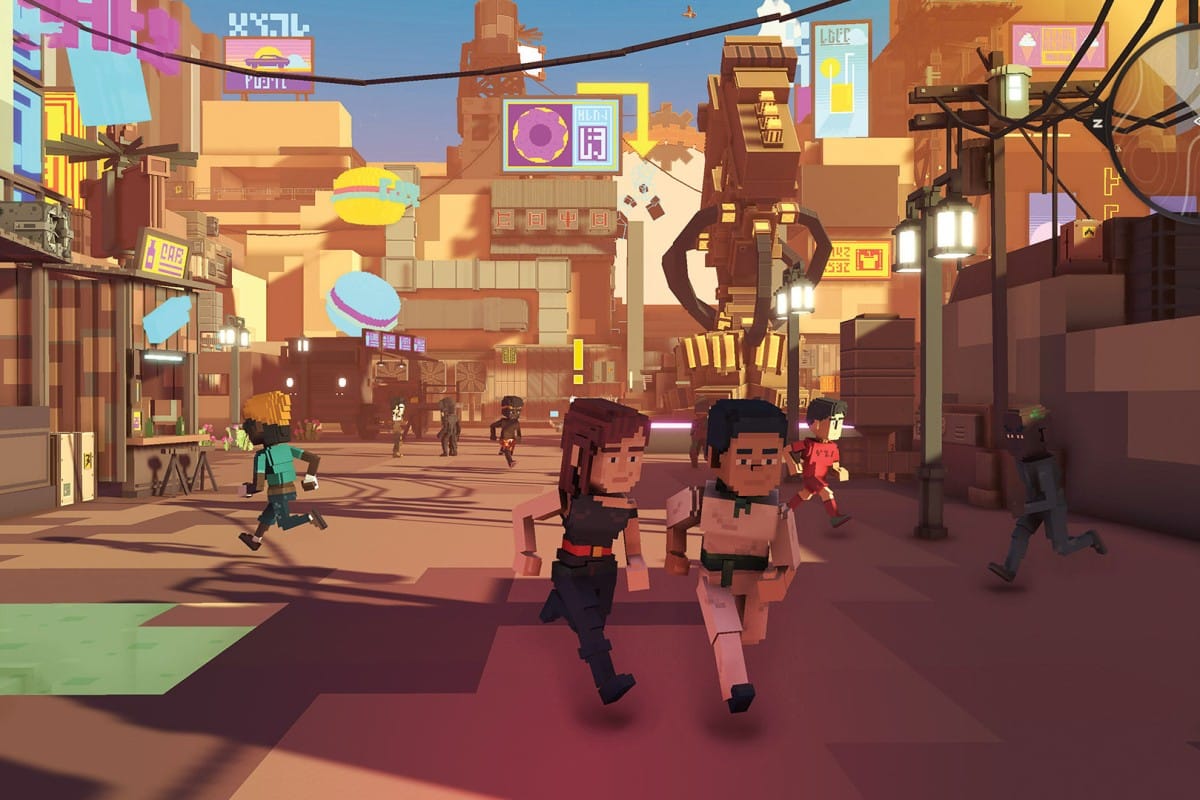Table of Contents
Unless you’ve been daydreaming in your very own alternate reality, you must have already heard of an actual parallel universe – one that exists not in the fuzzy musings of a midday slump, but in a portable high-definition digital realm that we can actually attach to our heads.
While there’s no universally accepted definition, the metaverse can be broadly described as a 3D version of the Internet – a digital space where real-life activities can be carried out without geographical barriers. It’s a colourful but confusing mix of complicated technologies, culminating in an eye-watering display of virtual worlds where users are morbidly forced to interact with one another via avatars – pixelated characters that supposedly represent a more polished version of human beings.
“Where’s my gun? How do I punch this guy?” said one overzealous colleague after encountering another avatar at Sotheby’s digital art gallery in Decentraland – a virtual world built on the Ethereum blockchain. While the metaverse may seem like an unnecessary remake of The Sims or a more child-friendly Grand Theft Auto, it goes far beyond the parameters of gaming. Rather, it’s an augmentation of the physical world with virtual instruments; a shared space on the Internet where we can “live” in – socialise, play games, work, attend events and more.
The metaverse represents a paradigm shift in our understanding of digitalisation because it digitses our appearance, personalities and everyday activities, therefore bringing us to “life” on the Internet. It’s a digital portrayal of who we are and what we aspire to be. This is why the metaverse has profound implications for the digital economy, as it might well be the next frontier for online interactions; a more life-like projection of our digital identities.
Despite its nascency, staunch crypto fans are already touting the metaverse as a decentralised utopia where they can gain full access and control to their digital assets. On the other hand, tech giants like Meta (formerly Facebook), Microsoft, and Google actively preach about how the metaverse will be the next generation of the Internet. According to Grayscale Investments, the metaverse offers an eye-watering USD 1 trillion annual revenue opportunity in areas like advertising and digital events.
Centralised vs decentralised metaverse
In October, Facebook announced its rebranding as Meta, in line with the company’s focus on developing virtual spaces on the Internet. Founder Mark Zuckerberg called the metaverse the “next generation of the internet and next chapter for us as a company”. He said the plans would create “entirely new experiences and economic opportunities”. Shortly after Facebook’s rebranding, Microsoft revealed Mesh for Microsoft Teams – a virtual office that allows people in different physical locations to meet and collaborate online via holographic avatars.

However, the critical question that arises is how digital spaces developed by centralised entities can fit into Web 3.0 – the next iteration of the Internet that will be largely defined by its decentralised infrastructure. While some crypto fanatics are skeptical of centralised data repositories (e.g. social media platforms like Facebook that can create and store digital identities), the reality is that a metaverse created and maintained by a centralised platform is merely a 3D extension of its online features that it ultimately controls. If the metaverse were to truly be a virtual reflection of the real world, then it should be a space where users can have full control of their assets and transactions, just like how they would in real life.
“The way Big Tech projects the vision of creating the metaverse is really lacking diversity,” said Sebastian Borget, co-founder of Ethereum-based metaverse The SandBox, in an interview with the South China Morning Post.
“We don’t think those companies can build something truly fun that’s catered to the users because they’ve been so focused on their key business model and how to satisfy shareholders rather than satisfy users who own the asset, who own the governance of their own platform”, he added.
In a report published last week, analysts at Goldman Sachs said that blockchain technology is the only technology that can “uniquely identify any virtual object independent of a central authority”, and that the ability to track and establish ownership will be crucial to the functioning of the metaverse. It’s therefore imperative that investors understand the makeup of Web 3.0, and how blockchain technology’s decentralisation can help to create a metaverse where users can have full custody of their digital identities and assets.
It’s also important to note that interoperability, or the ability for blockchains to operate in tandem, is arguably the most crucial factor in determining the long-term sustainability of the metaverse. If interoperability is not achieved, then the metaverse will be segregated into individual “metaverses”, each with their own flaws and draws, which negates the purpose of the metaverse: a shared common space on the Internet for collective interactions and transactions. This is why blockchains such as Polkadot are viable investments as they are able to support the interoperability of blockchains and hence the overlap of individual virtual worlds in Web 3.0.
Virtual land in virtual worlds
Ownership of virtual land in decentralised virtual worlds such as The SandBox and Decentraland are recorded as non-fungible tokens (NFTs), which means that buyers gain full ownership of their assets on the Ethereum blockchain. Virtual assets are purchased with crypto tokens ($MANA on Decentraland and $SAND on The SandBox), and they can subsequently be sold for a profit as NFTs.
The floor price of a plot of virtual land on Decentraland and The SandBox currently stands at USD 13,500 and USD 10,500 respectively. On Tuesday, Republic Realm, a firm specialising in the development of virtual real estate, paid an eye watering USD 4.3 million for a plot of land in The SandBox, breaking the record for the biggest virtual real estate sale.
While prices of virtual real estate are mind-boggling, it’s not all as ridiculous as it seems. Similar to real-world land, the value of these assets comes from scarcity and utility. There are a finite number of virtual land plots (90,601 plots on Decentraland and 166,464 plots on The SandBox), and investors are hopeful that individuals and organisations will be willing to spend their money on these virtual plots of land to build virtual infrastructures that can stimulate real life activities including shopping or concerts, therefore increasing the value of these digital spaces in the long-run.
Blockchain-based games in the metaverse
In an interview with Blockhead, Aleksander Larsen, COO of popular blockchain-based game Axie Infinity said, “Play-and-Earn demonstrates how emerging technologies, such as non-fungible tokens (NFTs) and cryptocurrencies, are providing transformative economic opportunities for communities, especially in developing nations where jobs are lacking, a significant portion of the population is unbanked, and COVID-19 crisis relief has been limited”.
While Larsen’s statement is a slight exaggeration of the benefits of blockchain-based games, the play-to-earn model using blockchain technology is undoubtedly a groundbreaking development in the gaming and metaverse industries. In the virtual world of Axie Infinity, players can breed Axies (Pokemon-like monsters that exist as NFTs), pit them against other players, and/or exchange them for the game’s native crypto token AXS (a governance token that can be staked to earn additional rewards) and SLP, which can then be exchanged for fiat currencies on crypto bourses. It’s a meritocratic and almost self-sustaining microeconomy that demonstrates how users can have control over their digital identities while still creating streams of income.
Since its inception in 2020, the AXS token has risen in value by more than 70,000,000%. The play-to-earn industry as a whole already has a USD 29 million market capitalisation. “Scholarship platforms”, or platforms which enable and educate players in emerging economies to participate in play-to-earn games, are also attracting major investments. Avocado Guild, an Australian-based gaming guild, recently raised USD 18 million in a Series A funding round led by prominent investors including QCP Soteria Node and Binance Smart Chain, bringing the company’s valuation to USD 200 million.
It remains to be seen how sustainable play-to-earn games are. Especially if demand is almost purely driven by economic incentives. Larsen was quick to point out that play-to-earn games should be known as play-and-earn instead, as he claimed that the majority of players cited “community” rather than economic incentives as the main reason why they’re playing Axie Infinity. However, it’s also a known fact that Axie Infinity players in developing countries such as the Philippines and Venezuela are earning significantly more than what jobs in their physical economy can offer.
Nevertheless, blockchain-based games might redefine the gaming industry in Web 3.0 as it’s an interesting example of how users can actually make a living within the decentralised metaverse.
What’s next for the metaverse
The jury is still out on whether or not the metaverse can really come to life. I personally can’t see myself wearing a VR headset for hours, or living as a pixelated cartoon figure devoid of real-life interactions. Games hardly pique my interest, and any form of real estate, let alone virtual real estate, is beyond my means for now. But while the metaverse may seem like a hype train, 2021 has shown that the world is never too far away from embracing the crazy, which is why the metaverse should not be written off as a pixelated gimmick yet.
What’s definite is that Web 3.0 is inevitable, and blockchain technology will be the underlying infrastructure for the decentralised Internet. Individual projects can bestow attractive returns, but investors should pay greater attention to the factors that will determine the long-term sustainability and viability of the metaverse within Web 3.0 – interoperability and decentralisation.
Layer-1 blockchains that support smart contracts while facilitating interoperability should form the basis of crypto and metaverse investing decisions, especially at the advent of a more decentralised world.









